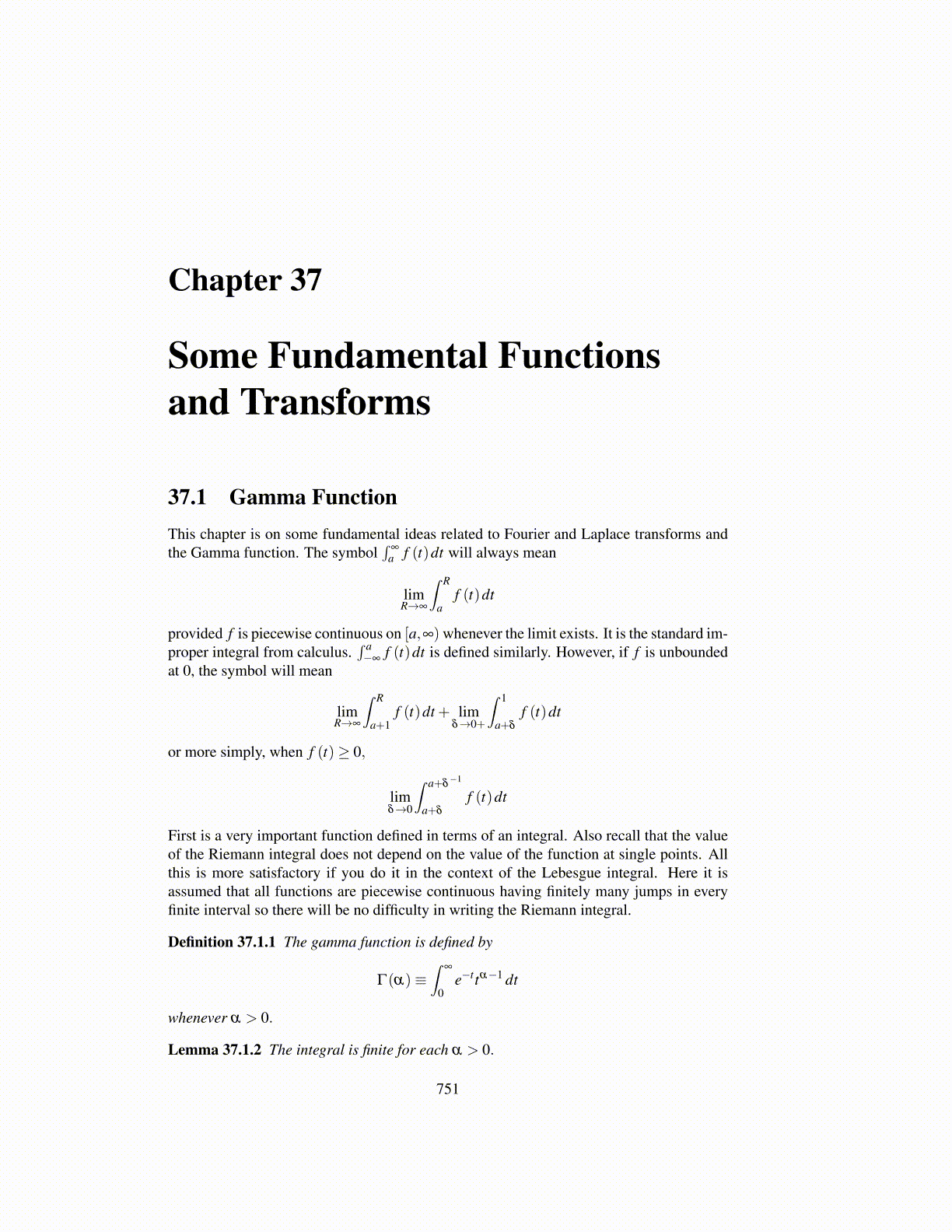
Chapter 37
Some Fundamental Functionsand Transforms
37.1 Gamma FunctionThis chapter is on some fundamental ideas related to Fourier and Laplace transforms andthe Gamma function. The symbol
∫∞
a f (t)dt will always mean
limR→∞
∫ R
af (t)dt
provided f is piecewise continuous on [a,∞) whenever the limit exists. It is the standard im-proper integral from calculus.
∫ a−∞
f (t)dt is defined similarly. However, if f is unboundedat 0, the symbol will mean
limR→∞
∫ R
a+1f (t)dt + lim
δ→0+
∫ 1
a+δ
f (t)dt
or more simply, when f (t)≥ 0,
limδ→0
∫ a+δ−1
a+δ
f (t)dt
First is a very important function defined in terms of an integral. Also recall that the valueof the Riemann integral does not depend on the value of the function at single points. Allthis is more satisfactory if you do it in the context of the Lebesgue integral. Here it isassumed that all functions are piecewise continuous having finitely many jumps in everyfinite interval so there will be no difficulty in writing the Riemann integral.
Definition 37.1.1 The gamma function is defined by
Γ(α)≡∫
∞
0e−ttα−1 dt
whenever α > 0.
Lemma 37.1.2 The integral is finite for each α > 0.
751